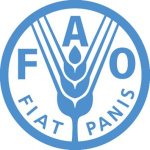- Branche: Agriculture
- Number of terms: 87409
- Number of blossaries: 0
- Company Profile:
Established in October 1945 with the objective of eliminating hunger and improving nutrition and standards of living by increasing agricultural productivity, FAO coordinates the efforts of governments and technical agencies in programs for developing agriculture, forestry, fisheries, and land and ...
1. A form of reproduction in animals in which the developing embryo obtains its nourishment directly from the mother via a placenta or by other means.
2. A form of asexual reproduction in certain plants, in which the flower develops into a budlike structure that forms a new plant when detached from the parent.
3. The development of young plants in the inflorescence of the parent plant.
Industry:Biotechnology
1. A group of alleles, each from a different locus in the same region of a chromosome, that exist in the same double helix.
Industry:Biotechnology
1. A layer of epithelial cells on the surface of the ovary that are continuous with the mesothelium.
2. The layer of epithelial cells lining the seminiferous tubules of the testis, which gives rise to spermatogonia.
Industry:Biotechnology
1. A low-molecular-weight biological compound that is usually synthesized by an enzyme.
2. A compound that is essential for a metabolic process. A substance synthesized by the organism, or taken in from the environment. Autotrophic organisms take in inorganic metabolites, such as water, CO<sub>2</sub>, nitrates and some trace elements.
Industry:Biotechnology
1. A method of asexual reproduction in which a new individual is derived from an outgrowth (bud) that becomes detached from the body of the parent.
2. Among fungi, budding is characteristic of the yeast <i>Saccharomyces cerevisiae.</i>
3. A form of grafting in which a single vegetative bud is taken from one plant and inserted into stem tissue of another plant so that the two will grow together. The inserted bud develops into a new shoot.
Industry:Biotechnology
1. A molecule that plays a role in transporting electrons through the electron transport chain. Carrier molecules are usually proteins bound to non-protein groups and able to undergoing oxidation and reduction relatively easily, thus allowing electrons to flow.
2. A lipid-soluble molecule that can bind to lipid-insoluble molecules and transport them across membranes. Carrier molecules have specific sites that interact with the molecules they transport. Efficiency of carrier molecules may be modified by modifying the interacting sites through genetic engineering.
Industry:Biotechnology
1. A nucleotide sequence of DNA to which RNA polymerase binds and initiates transcription. It usually lies upstream of (5´ to) a coding sequence. A promoter sequence aligns the RNA polymerase so that transcription will initiate at a specific site.
2. A chemical substance that enhances the transformation of benign cells into cancerous cells.
Industry:Biotechnology
1. A plant tissue consisting of spherical, undifferentiated cells, frequently with air spaces between them.
2. Loose connective tissue formed of large cells.
Industry:Biotechnology
1. A reproductive cell that develops into an individual without union with other cells; some spores such as meiospores occur at a critical stage in the sexual cycle, but others are asexual in nature.
2. A small, protected reproductive form of a micro-organism, often synthesized when nutrient levels are low.
Industry:Biotechnology
1. A sequence found in eukaryotes and certain eukaryotic viruses which can increase transcription of a gene when located (in either orientation) up to several kilobases from the gene concerned. These sequences usually act as enhancers when on the 5´ side (upstream) of the gene in question. However, some enhancers are active when placed on the 3´ side (downstream) of the gene. In some cases enhancer elements can activate transcription of a gene with no (known) promoter.
2. A substance or object that increases a chemical activity or a physiological process.
3. A major or modifier gene that increases a physiological process.
Industry:Biotechnology
